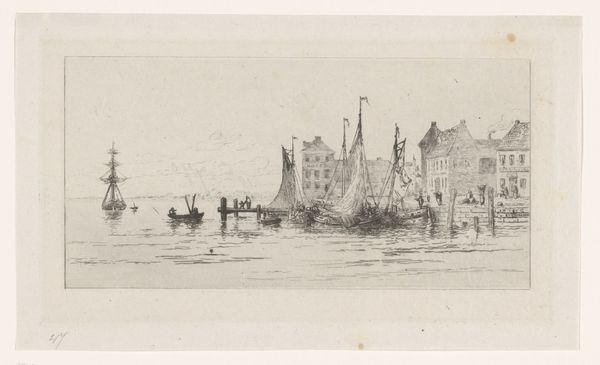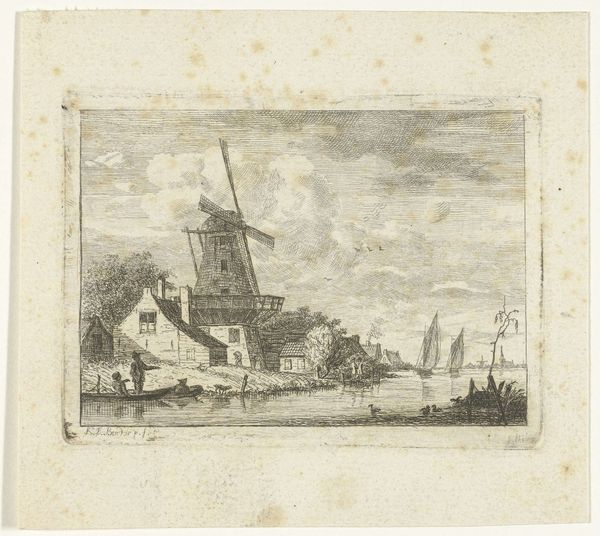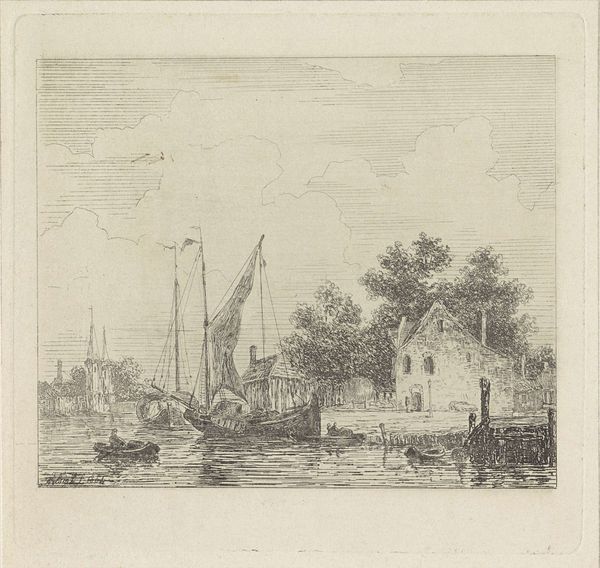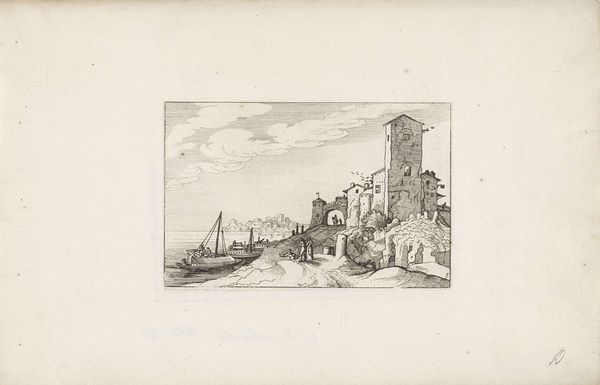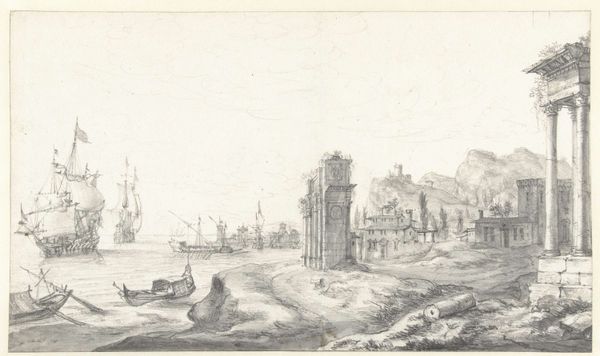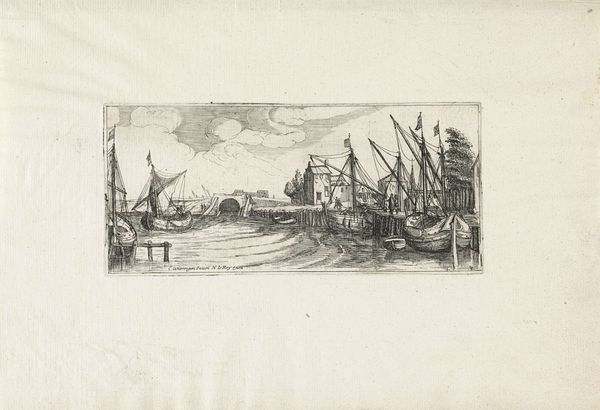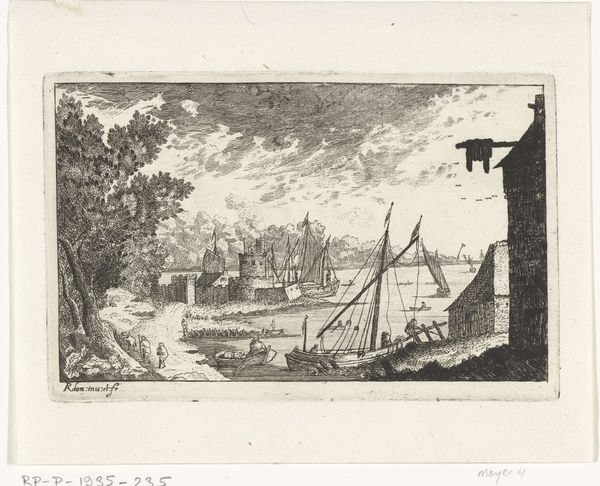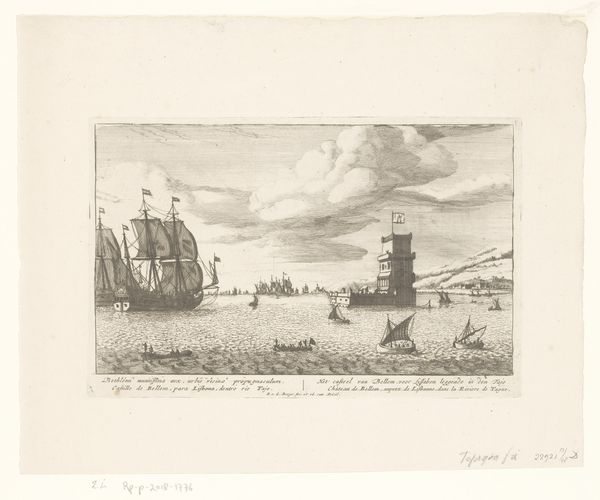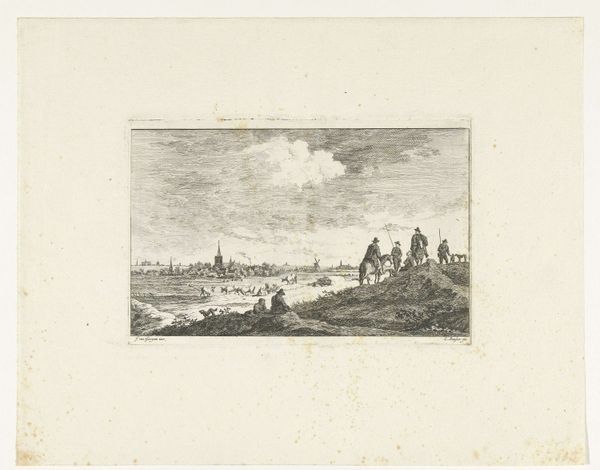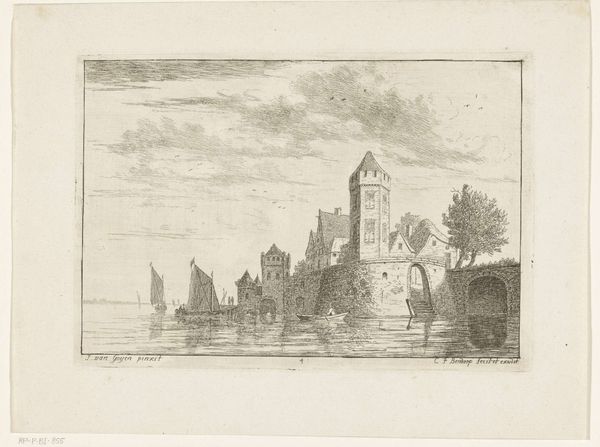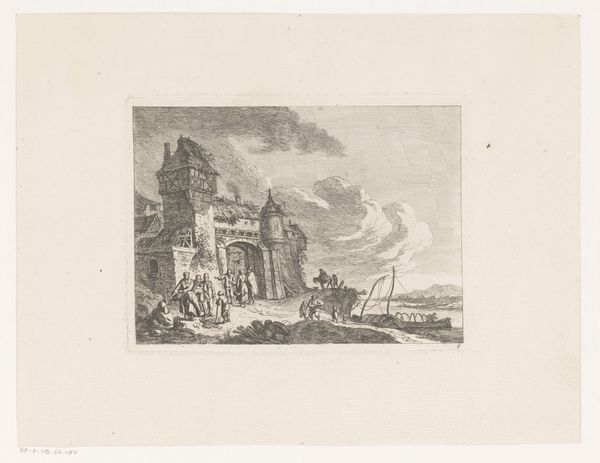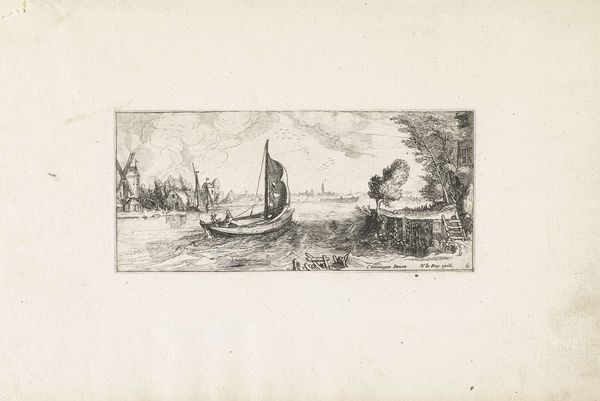
print, engraving
#
dutch-golden-age
# print
#
landscape
#
cityscape
#
engraving
#
realism
Dimensions: height 76 mm, width 103 mm
Copyright: Rijks Museum: Open Domain
Jan Izaak van Mansvelt created this etching of boats near a city wall sometime before his death in 1802. Look closely, and you can see the marks of the etching needle, a tool used to scratch lines into a metal plate. The plate is then submerged in acid, which bites into the exposed lines, allowing it to hold ink. This printmaking technique, common in Mansvelt’s time, enabled the production of multiple impressions, making images more accessible to a wider audience. The etching process, with its reliance on skilled handwork and chemical processes, reflects a moment when craft traditions met the rise of industrialization. Consider how the meticulous labor involved in creating the etching plate contrasts with the potential for mass production. This tension between handcraft and industry is central to understanding the social and economic context of art in the late 18th century, before the Industrial Revolution fully took hold. By examining the materials and processes used, we can better appreciate the nuances of artistic production and its relationship to broader social forces.
Comments
No comments
Be the first to comment and join the conversation on the ultimate creative platform.
